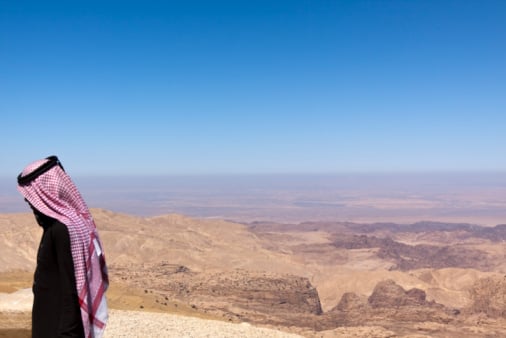
Source: Thinkstock
Saudi exports dropped 5.7% year-over-year in 2014 to an average of 7.11 million barrels a day, the lowest level in three years, according to Joint Organizations Data Initiative (JODI) data. When the Saudis persuaded/forced other OPEC members last November to maintain market share at whatever price, the Saudis had already seen the writing on the wall regarding exports to the United States and had turned instead to Asia to prop up their sales and their market share.
To maintain market share in Asia, Saudi Aramco, the kingdom’s national oil company, offered its customers to the east the largest discounts in at least 14 years on its benchmark crude, according to a report from Bloomberg. The Saudis are currently the largest crude oil supplier to China, supplying about 13% of the country’s crude oil imports. And that’s not all.
ALSO READ: Countries That Hate America the Most
Saudi Aramco is joining forces with Sinopec to build a new 400,000-barrel per day refinery in the Saudi port city of Yanbu on the Red Sea, and the company is also working to double its exports to China by helping the Chinese build new downstream chemical plants and other customer-facing facilities. Saudi Aramco’s CEO told China’s Caixin Online last month:
We look at every province in China as a province for which we’re responsible, one way or another, to provide affordable and environmentally acceptable energy tools. Right now we’re investing in Fujian, but I’m hoping that in the future every province in China will see the Aramco name through our investments in refining, through our investments in retail distribution, gasoline stations, and through our investments in petrochemicals.
A London-based money manager told Bloomberg in February that Saudi Arabia needs to export a minimum of 7 million barrels of oil a day in order to meet the country’s budget requirements. To break even, the Saudis need an oil price of $80 a barrel, about 25% higher than where prices are today. The government can — and has — drawn on its $700 billion sovereign wealth fund to make ends meet, but even that huge rainy-day fund will not last forever if $50 billion or so has to be withdrawn every year.
ALSO READ: 5 Big Oil Stocks to Buy for the Rest of 2015
Sponsored: Find a Qualified Financial Advisor
Finding a qualified financial advisor doesn’t have to be hard. SmartAsset’s free tool matches you with up to 3 fiduciary financial advisors in your area in 5 minutes. Each advisor has been vetted by SmartAsset and is held to a fiduciary standard to act in your best interests. If you’re ready to be matched with local advisors that can help you achieve your financial goals, get started now.
Thank you for reading! Have some feedback for us?
Contact the 24/7 Wall St. editorial team.


